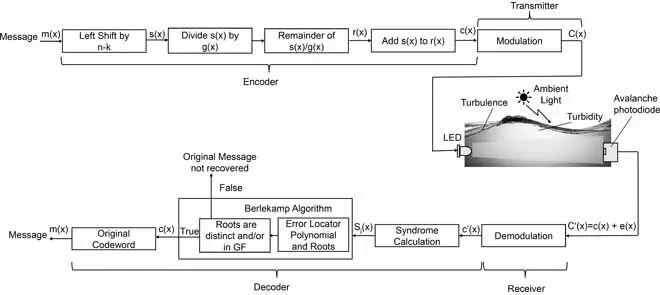Experimental Demonstration and Evaluation of BCH-Coded UWOC Link for Power-Efficient Underwater Sensor Nodes
Jul 4, 2022· ,,·
0 min read
,,·
0 min read
Maaz Salman
Javad Bolboli
Wan-Young Chung
 Image credit:
Image credit:Abstract
Mobile nodes can encounter many challenges in underwater environments during communication due to turbidity, suspended particles, small bubbles, and turbulence. These factors cause absorption and scattering, ultimately corrupting optical signals. Error-correcting codes can be used to correct certain corrupted bits and thus reduce the errors in a channel. In this work, a Bose-Chaudhuri-Hocquenghem (BCH) (31, 16)-coded underwater wireless optical communication (UWOC) system is proposed to enhance the communication performance between power-efficient sensor nodes. The proposed BCH-coded system needs a reasonable amount of computing capability and is powered by a battery, enabling the node to have an on-site data processing unit and untethered communication. The encoder and decoder algorithms of the BCH code are implemented on the Embedded C software and coded to run on an Atmel ATmega128A micro-controller. The system’s performance is evaluated by emulating the effects of scattering and absorption, noise due to surrounding and ambient light, turbidity, air bubbles, and turbulence in a natural underwater environment. Moreover, a 0.5 Mbps BCH-coded link achieves a 93.5% PSR, which is 6% better than that of the uncoded system, at a moderate turbidity level of 64 NTU, in the presence of weak turbulence (induced by a pump at a 2.5 L/min displacement rate) and air bubbles (generated by an aerating jet at an airflow rate of about 1.2 L/min ).
Type
Publication
IEEE Access (10)